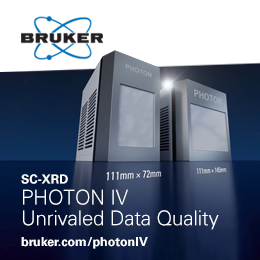
Notice
Reflections on the first 50 years of the Society of Crystallographers in Australia and New Zealand
![thumbnail [thumbnail]](https://www.iucr.org/__data/assets/image/0014/160403/thumbnail.jpg)
From its humble beginnings as a small group of ‘Bush Crystallographers’, meeting for the first time under the same roof at Sydney University in 1961, it formalised itself as the Society of Crystallographers in Australia at its 10th meeting in 1976. In acknowledgement of the major and long-term engagement of colleagues from New Zealand, its name was formally changed to the Society of Crystallographers in Australia and New Zealand at its 21st meeting in 2000.
Now in its 7th decade, the Society can claim, both as a collective and through its individual members, to have played a significant role in the crystallography landscape in Australia and New Zealand and overseas. It was a major actor in the push for funding for Australian access to major synchrotron and neutron facilities overseas (the so-called ‘suitcase science’/‘Small Country Big Science’ initiative); its members were prime movers in the establishment of the Australian National Beamline Facility (ANBF) in Tsukuba, Japan; it played a major role in the push for the establishment of the Australian Synchrotron and the new research reactor (OPAL); and it led, or had members on, many of the committees advising on the type and design of beamlines that were proposed to be built at those facilities. It was a strong proponent for and (along with the Crystallographic Society of Japan) a prime mover in the establishment of the Asian Crystallographic Association (AsCA) as a Regional Associate of the International Union of Crystallography (IUCr). Society members have acted as President and Vice President of the IUCr, served on its Executive Committee, and occupied seats on all IUCr Commissions at one time or another, often as Chair. It has been the sole organiser of two of the 26 IUCr Congresses and General Assemblies held since 1948, and it has maintained a strong supportive presence (both financial and participatory) in meetings of AsCA since its foundation in 1987.
Since 1961, its series of 35 national meetings and 8 Crystallography Schools, and since 1980, its 81 Newsletters, have provided critical and effective platforms for exchanging, instructing and disseminating crystallographic information, past, present and future. These platforms continue to provide an important medium for connection among professional and student crystallographers in Australia and New Zealand. They have served to celebrate and encourage the achievements of members and to engender a sense of a crystallographic community across both nations.
In recent times, the Society is embracing the increased focus on structural biology as society responds to the need for greater understanding of the nature and function of molecules essential to life. It is also adjusting to the massive change in the ‘face’ of the science of crystallography from its original role as a unique and important discipline in its own right to a still extremely important, but now largely supportive, ‘enabling discipline’ underpinning the broader biological, materials, chemical and physical sciences. In successfully addressing these challenges, the future for the Society has the chance to be even brighter than its very illustrious past.
If you wish to learn more, my book on the history of the Society of Crystallographers in Australia and New Zealand is available on Amazon.com.au.
Copyright © - All Rights Reserved - International Union of Crystallography







